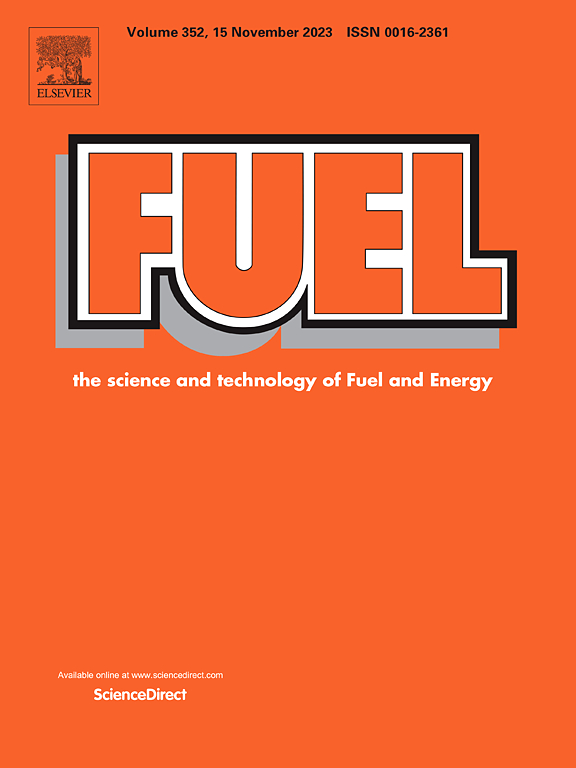Flame behaviors, pressure evolution, and molecular reaction mechanism of methane/pulverized bituminous coal hybrid deflagrations
IF 6.7
1区 工程技术
Q2 ENERGY & FUELS
引用次数: 0
Abstract
The deflagration of methane/powdered coal hybrids poses a serious risk to the production safety and personnel health for underground coal mines. In this study, we firstly performed 21 sets of deflagration experiments to investigate the pressure variation and flame behaviors of methane/pulverized bituminous coal mixtures. The experimental results revealed that the explosive power attains its maximum at 9.5 vol% methane and 100 g/m3 of pulverized coal, whereas the maximum flame propagation speed was recorded at 35.08 m/s with 9.5 vol% methane and 50 g/m3 of pulverized coal. The gas-phase reaction predominantly governs the deflagration characteristics of the mixtures, with methane concentration significantly exerting a more significant influence on these characteristics than powdered coal concentration. Then, reactive field molecular dynamics (ReaxFF-MD) simulations were conducted to explore the microscopic mechanism of methane/pulverized bituminous coal hybrid deflagrations. The simulation results indicated that bituminous coal molecules undergo successive repeated pyrolysis, generating a substantial number of active intermediates and gaseous products. These volatile species contribute to the gas-phase deflagration reaction, thereby intensifying the overall deflagration process. The primary pathway of the gas-phase deflagration reaction involves the following radical reactions: CH4 → ·CH3 → ·CH3O → CH2O → ·CHO → CO+H2 → CO2+H2O. This study would provide scientific guidance for efficient prediction, control, and reduction of methane/pulverized bituminous coal hybrid deflagration accidents.
求助全文
约1分钟内获得全文
求助全文
来源期刊

Fuel
工程技术-工程:化工
CiteScore
12.80
自引率
20.30%
发文量
3506
审稿时长
64 days
期刊介绍:
The exploration of energy sources remains a critical matter of study. For the past nine decades, fuel has consistently held the forefront in primary research efforts within the field of energy science. This area of investigation encompasses a wide range of subjects, with a particular emphasis on emerging concerns like environmental factors and pollution.
 求助内容:
求助内容: 应助结果提醒方式:
应助结果提醒方式:


